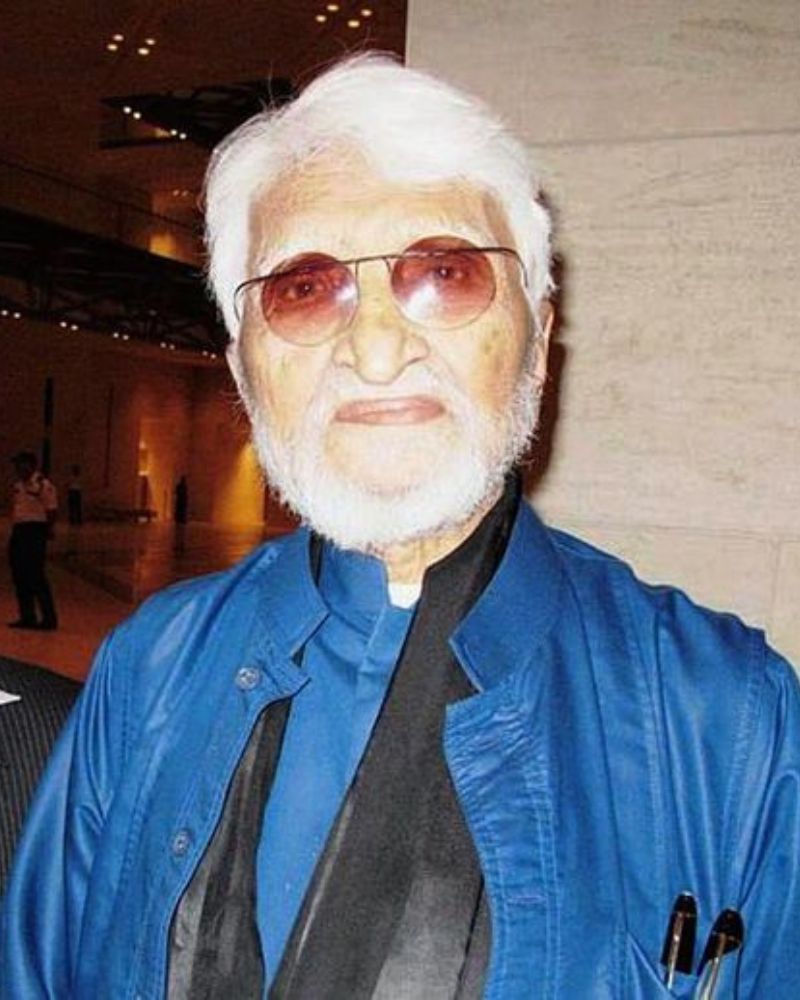M.F. Husain: The Picasso of India

Maqbool Fida Husain, popularly known as M.F. Husain, was one of India’s most celebrated modern artists. Known for his bold lines, vibrant colors, and dynamic compositions, he revolutionized Indian contemporary art. His ability to merge traditional Indian themes with modernist techniques earned him international acclaim, making him one of the most influential figures in Indian art history. Husain's legacy is marked by his fearless expression and his relentless pursuit of artistic freedom, which set him apart as a visionary and a true icon of Indian art.
A Unique Artistic Style
M.F. Husain’s paintings were instantly recognizable due to their distinct style—elongated figures, energetic strokes, and a deep sense of movement. He was greatly influenced by Indian folk traditions, temple sculptures, and the works of classical Indian painters. However, he infused these influences with a modernist sensibility inspired by artists like Pablo Picasso and Henri Matisse. Husain's figures were often characterized by fluid lines and a sense of rhythm, with elongated bodies and exaggerated features that gave his subjects a dynamic energy. His use of bold, vivid colors and a heightened sense of abstraction brought a fresh vitality to Indian art, making his work stand out in the world of contemporary painting.
His subjects ranged from horses and women to Indian deities and mythical stories, reflecting his deep fascination with Indian culture, history, and mythology. The recurring motif of horses in his work was particularly significant, symbolizing strength, power, and freedom. His works often depicted the Indian epic Ramayana and Mahabharata, as well as rural village life, and important figures such as Mahatma Gandhi and Mother Teresa. Through these subjects, Husain captured the pulse of India—its culture, spirituality, and struggles. His bold and expressive lines breathed life into these subjects, making his art a powerful visual experience that transcended boundaries.
Depicting India’s Cultural Essence
Husain had an extraordinary ability to capture the spirit of India in his paintings. His deep connection to his homeland was evident in his portrayal of Indian life, customs, and festivals. The Bharat Mata series, which depicted India as a mother figure, was particularly symbolic of his devotion to the nation. Through this series, Husain invoked the concept of India as both a land of rich history and a mother who nourishes her children. His works became a reflection of India's cultural and social identity, serving as a powerful symbol of Indian nationalism and pride.
Despite his modernist approach, Husain never lost touch with India’s cultural roots. His ability to blend the old with the new, modern techniques with traditional subjects, made him a true pioneer in Indian contemporary art. Husain’s work was a celebration of India, from its classical mythology to its modern-day struggles, and it resonated deeply with both Indian and international audiences.
A Controversial Yet Fearless Artist
M.F. Husain was not just a painter but also a provocateur. His work often sparked debates, particularly his depictions of Hindu deities in the nude, which led to controversy and legal challenges. Some of his paintings, such as the Bharat Mata series, faced severe backlash from religious groups, and Husain was accused of insulting religious sentiments. The protests and legal cases that followed eventually led to his self-imposed exile. Despite the backlash, Husain stood firm in his beliefs and continued to challenge the boundaries of art. He believed that art should challenge, question, and provoke thought, and he never compromised on his artistic vision.
Husain's resilience in the face of adversity made him a symbol of creative independence. His fearless approach to addressing sensitive and controversial subjects ensured that his art remained relevant and impactful, even in the face of societal resistance.
Multifaceted Creativity
Beyond painting, Husain was also a filmmaker, poet, and storyteller. His film Through the Eyes of a Painter, which won a Golden Bear at the Berlin International Film Festival, showcased his versatility as an artist. Husain’s creativity knew no bounds, and his contributions to Bollywood, particularly through his collaborations with cinema legends, further cemented his place as one of the most multifaceted artists of his time. His ventures into filmmaking and poetry displayed his ability to transcend the canvas and explore other forms of expression, reflecting his limitless imagination.
Legacy and Influence
M.F. Husain’s contributions to Indian art are unparalleled. He was a key member of the Progressive Artists’ Group, which redefined Indian modern art and helped place Indian art on the global map. His works are housed in prestigious museums and private collections worldwide, and his paintings continue to command high respect in the art world.
Despite facing political and personal challenges, Husain’s legacy remains untarnished. His fearless approach to art, his deep connection to India’s cultural landscape, and his ability to blend modernity with tradition ensure that he remains an enduring icon in the world of art. M.F. Husain was not just an artist; he was a storyteller, a visionary, and a trailblazer. His art continues to inspire and provoke, proving that creativity has no boundaries and that the role of art is not only to reflect society but also to challenge it.